Tadoussac Whale Watching - Comprehensive Guide
Last update: 07/16/2024
Our blog continues to grow thanks to you, our readers. This post may contain affiliate links, which means we can earn a small commission if you make a purchase through them, at no extra cost to you. This helps us to continue to bring you more and support our work!
After providing an overview of things to do in Montreal in a previous post, I want to introduce you to a captivating experience in Quebec: whale watching in Tadoussac.
Following the long winter, Quebec eagerly anticipates the arrival of summer, and there are numerous reasons for this excitement. One such reason is the opportunity to witness the mesmerizing spectacle of whale watching in Tadoussac. From May to October, these magnificent marine creatures grace the St. Lawrence River, showcasing their remarkable displays as they gather to feed before their breeding season commences. During my five years of residing here, I have been fortunate enough to embark on multiple Zodiac trips, fulfilling my lifelong dream of encountering whales up close. Thus, I am thrilled to share with you everything you need to know about whale watching in Tadoussac.
In the south-west, Valérie and I tried snowmobiling in the Laurentians – it was great!
If you’re planning a road trip around here, checkout DiscoverCars to find the best rental car deals !
- All you need to know about whale watching in Tadoussac
- When is the best time to go whale watching in Quebec?
- How can I get closer to the whales in Tadoussac?
- Tour description and equipment to bring
- Which species are likely to be seen?
- Why are there whales in Quebec?
- Can whales be seen from the shore in Tadoussac?
Further south, the Charlevoix area offers a variety of activities.
Everything you should know about whale watching in Tadoussac
When is the ideal time for whale watching in Quebec?
Whales typically arrive in Quebec from May to October, but the best period to spot them is from July to September’s end. Please note that these dates can vary since whales are unpredictable creatures and roam freely.
The time of day does not significantly affect whale activity. Remember, they are wild animals and do not adhere to a strict schedule. Therefore, you can opt for a morning, afternoon, or evening trip based on your convenience or weather conditions. It might be helpful to utilize specialized weather applications to select a day with favorable weather conditions. If possible, consider postponing your whale watching excursion in Tadoussac or the surrounding area until the sea is calm and the sky is clear. This will enhance your overall experience and facilitate better photo opportunities if you are interested.
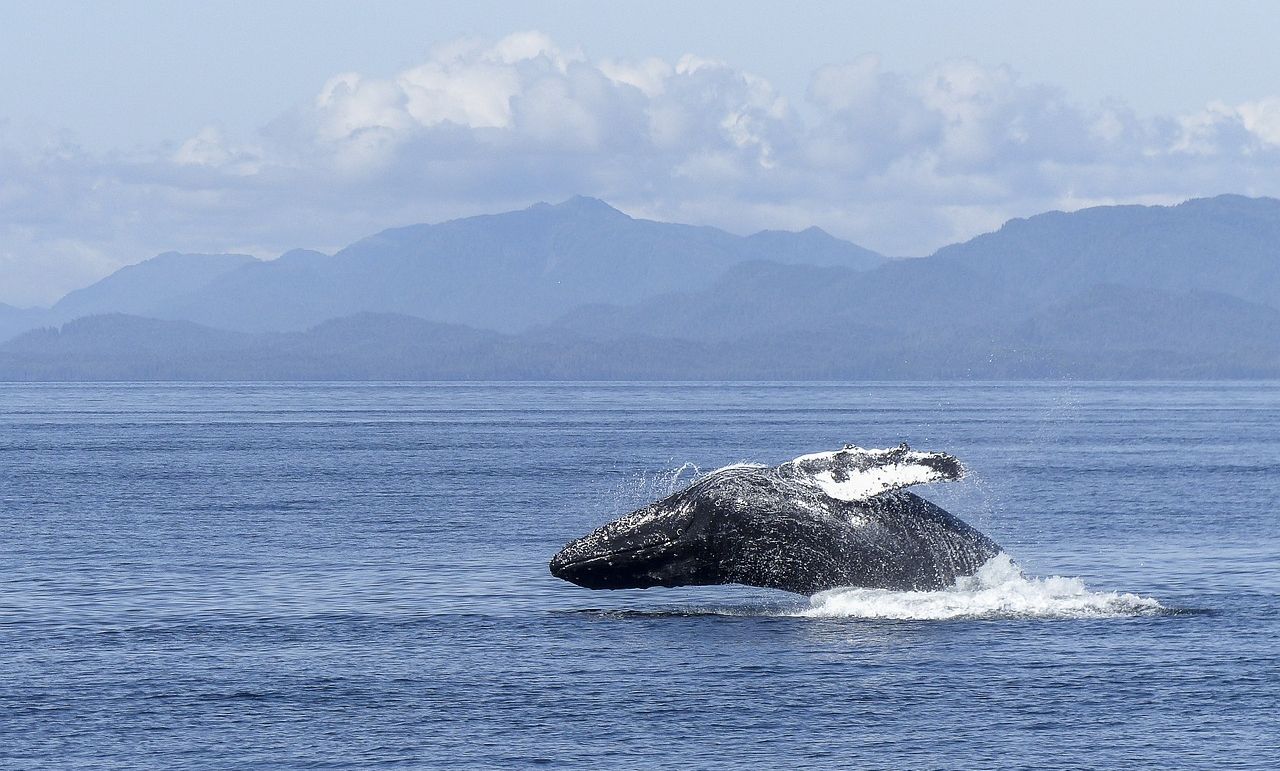

How can I get as close as possible to the whales in Tadoussac?
There are various ways to observe these magnificent creatures in their natural habitat. Generally, you can opt for a cruise, a zodiac tour, or a sea kayak adventure. Let me provide you with a brief overview of the advantages and disadvantages of each whale watching option.
It’s important to note that there are numerous companies in and around Tadoussac that offer this incredible experience. To make your booking process easier, I’ve included links below to the Manawa website, which Sylvain and I often recommend for activity reservations and other arrangements.
I highly recommend booking your trip well in advance, as the observation season is short and eagerly anticipated by both local and international tourists. All operators must adhere to the same regulations for observing marine wildlife. The Whale Watching and Marine Mammal Approach Regulations, which are already in place, mandate a minimum approach distance of 100 meters to legally protect whales, dolphins, and porpoises from human interference. (Source: Government of Canada website)
Now, here’s a concise summary of what you should consider when selecting your whale watching experience in Tadoussac.
Tadoussac Whale Watching Cruise
Advantages:
- Enjoy protection from bad weather.
- Experience enhanced comfort.
- Minimize the impact of sea swell.
- Access onboard facilities like toilets and a cafeteria.
- Move freely around the boat.
Disadvantages:
- Limited proximity to the whales.
- Less intimate experience due to a high number of passengers.
- Reduced visibility.
- Observe whales from a distance.
- This is the most expensive trip option, along with the Zodiac trip.
The company AML (link above) offers a ‘whale guarantee’ so that you can return free of charge if the captain judges that no cetaceans were seen during your trip.

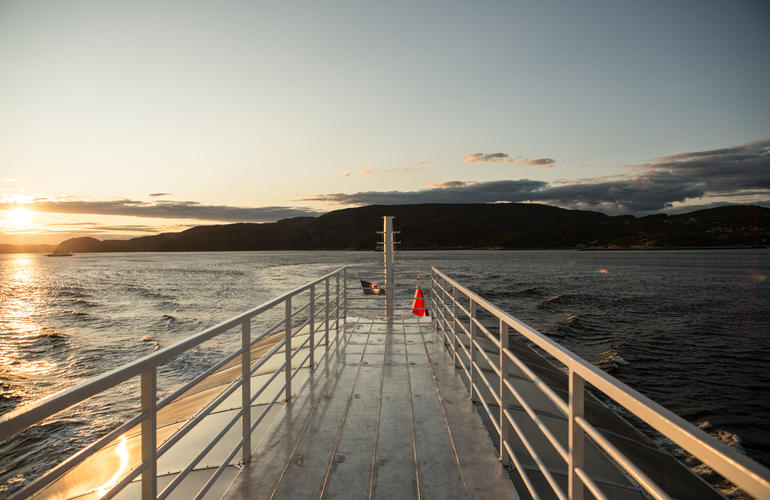
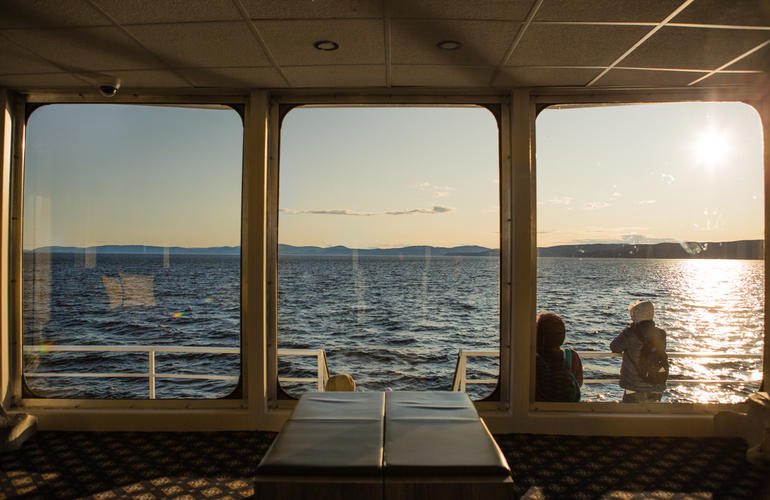
Zodiac whale watching in Tadoussac
Advantages:
- Close proximity to the majestic animals
- The boat’s exceptional maneuverability and speed for effortless location changes
- Enhanced sensations while sailing
- Improved visibility
- An informative guide on board to address your queries in real-time
Disadvantages:
- Most Zodiacs lack protection from inclement weather. However, you can rent wetsuits and waterproof jackets from our operator.
- Expect cooler temperatures while on the water.
- If the river is rough, you may experience some motion, so we advise against the trip for individuals with back problems or pregnant women.
- Please note that there are no toilet facilities available.
Sea Kayak Whale Watching in Tadoussac
I won’t deceive you, whale watching from a kayak requires effort and relies on luck. However, kayaking in the Saguenay Fjord itself is an exhilarating adventure. From my own experience, it feels akin to exploring the fjords of New Zealand, possessing a magical quality. When you add the possibility of encountering a seal, porpoise, or whale, it becomes an extraordinary experience! In fact, have a look at our full article on the Saguenay region!
These kayak trips offer a more active and intimate alternative to the conventional cruise ship or Zodiac excursions, which some may prefer. They are also more affordable, costing around €40. Departures for kayak trips are available from Tadoussac or nearby. Allow me to highlight two notable options.
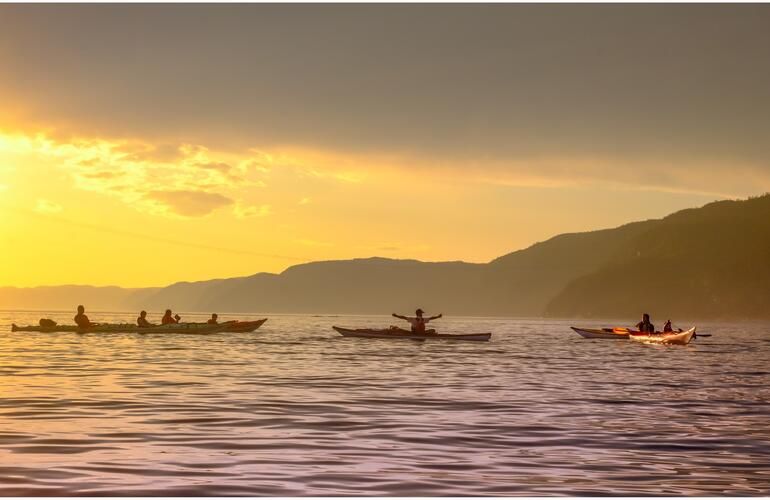
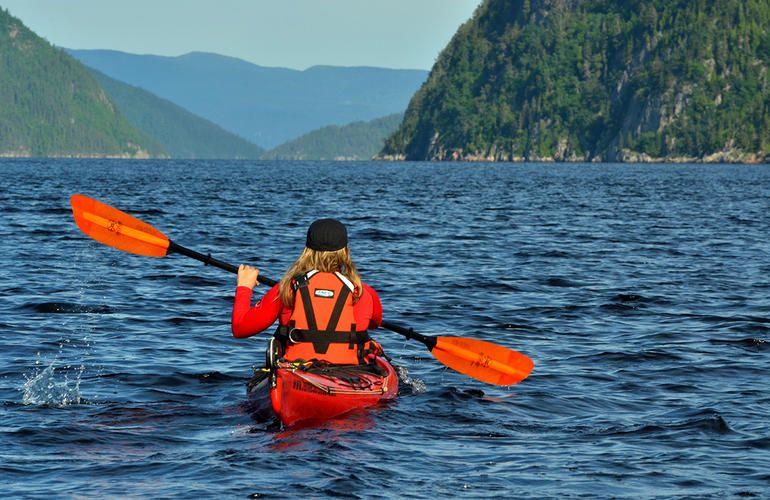

Excursion description and equipment to bring
Whether by boat, Zodiac, or kayak, I recommend that you bring the following:
- Camera: In this article, Sylvain will provide advice on which lenses to use and the optimal settings to capture your experience.
- Binoculars: Useful for “hunting” whales and enhancing your observation, especially when they are far away. Here’s an example of an excellent pair of binoculars.
- Seasickness tablets: It’s always good to be prepared. Hunger, cold and fatigue can worsen seasickness, so make sure you eat beforehand, dress warmly, and get a good night’s sleep. Following this rule will help prevent discomfort.
- Sunglasses: We highly recommend Maui Jim sunglasses for optimal eye protection.
- Sunscreen: Protect your skin from the sun’s rays.
- Warm sweater: Stay cozy during the trip.
On the Zodiac, the company will provide waterproof wetsuits and windproof jackets before boarding. Since rain and seawater can splash onto the boat and onto you, it’s important to wear waterproof shoes if you have them.
After a short land briefing by the guide, you will board the Zodiac. Throughout the excursion, the guide will explain the various marine species you may encounter during the season, their habits, and their life cycle. Feel free to ask questions, as the guides are passionate and knowledgeable about the subject. More details will be shared below.
Which species can be observed?
The Saguenay-Saint Lawrence Marine Park is renowned for its diverse fauna, with a wide variety of marine species present. Here are the most frequently observed marine mammals:
- Minke whale (length: 6 to 10 m, weight: 6 to 10 tonnes)
- Fin whale (length: 18 to 21 m, weight: 40 to 50 tonnes)
- Humpback whale (length: 11 to 16 m, weight: 25 to 35 tonnes)
- Blue whale (length: 21 to 30 m, weight: 80 to 135 tonnes)
- St. Lawrence River beluga whale (length: 3 to 5 m, weight: 0.7 to 2 tonnes)
- Harbour porpoise (length: 1.5 to 2 m, weight: 45 to 65 kg)
- Grey seal (length: 2 to 2.4 m, weight: 225 to 400 kg)
- Common seal (length: 1.5 to 1.9 m, weight: 100 kg)
If you’re fortunate, you may also catch sight of other cetaceans, including sperm whales, dolphins (white-beaked and white-sided), bottlenose whales, killer whales, and Atlantic pilot whales.
You can explore a map to view the recent live sightings of whales from the past week.
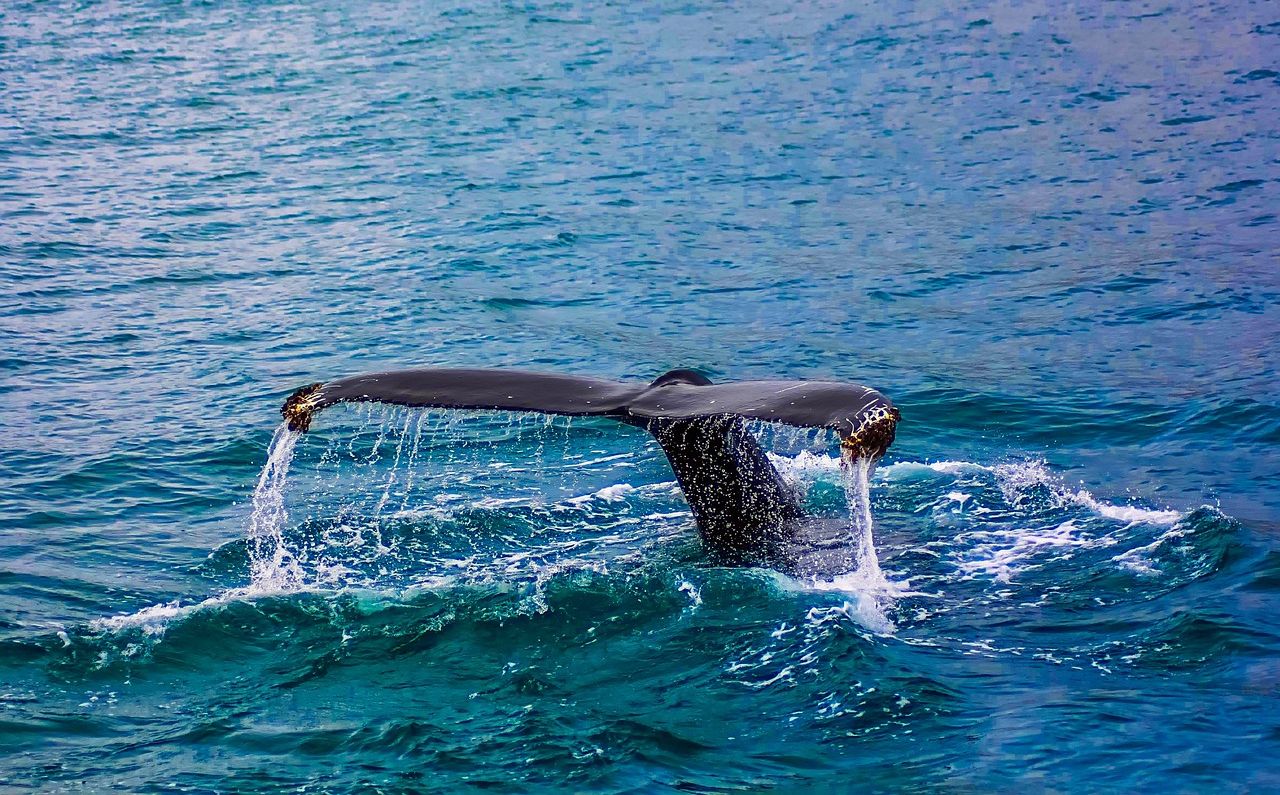
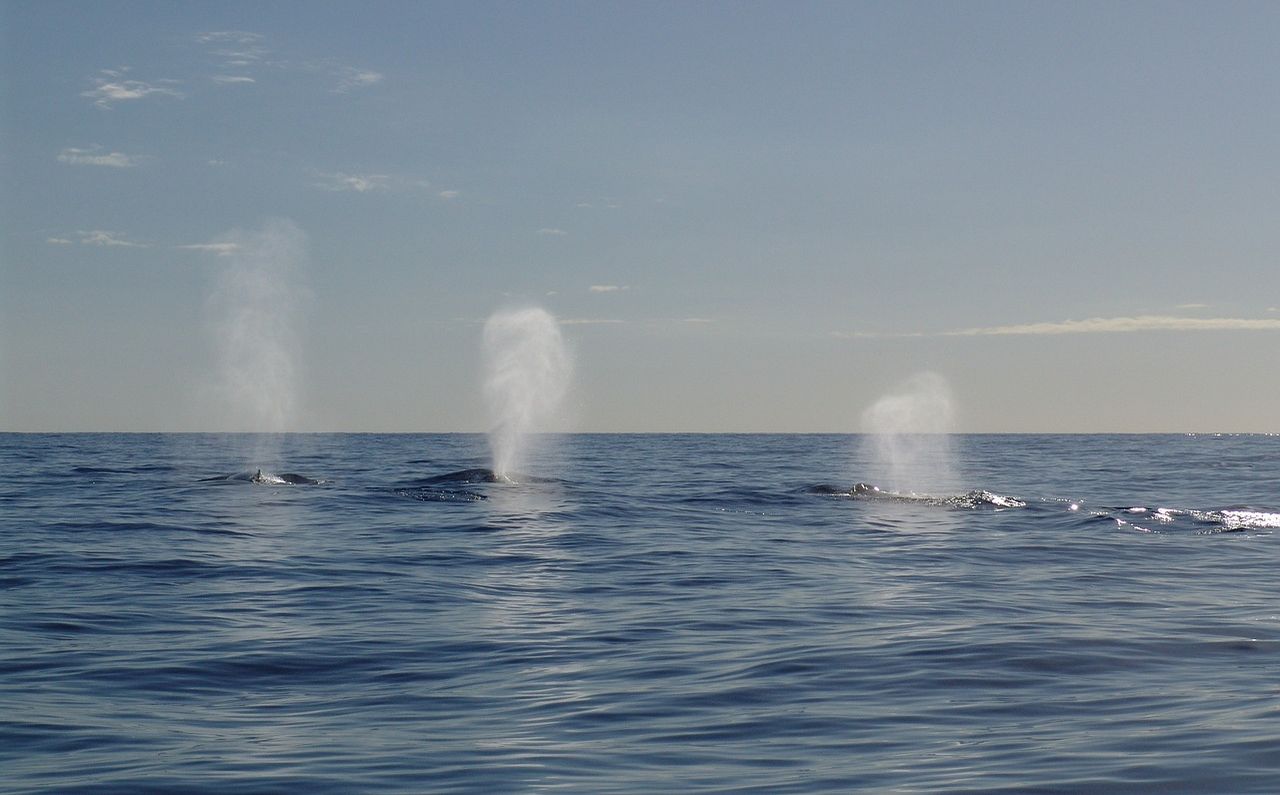
It’s important to remember that going on a whale-watching trip is not like visiting a zoo. These magnificent creatures are still wild animals, roaming freely, so you should approach these trips more like a serene “hunt.” Especially when in a Zodiac or kayak, you’ll be expected to spot even the slightest movement or breath emerging from the water. Personally, that’s what I find most enjoyable about these trips: staying vigilant and noticing a breath, a splash, or a glimpse of a tail or fin in the distance. The reward is truly astonishing and enchanting, creating a timeless encounter. Once you spot an animal, the guide will do their best to analyze its trajectory and position themselves for optimal observation. It’s then up to the animal to decide whether to approach or not.
Remember that frustration can be a part of the experience, but don’t let it discourage you. During the peak season, there’s a good chance you won’t return home empty-handed.
Why do whales come to Quebec?
In the summer, whales swim up the St. Lawrence to the estuary because it’s a rich source of food! It’s as simple as that! Here, the waters are abundant with plankton and fish due to an oceanographic phenomenon called upwelling. When strong ocean winds push water towards the surface, nutrient-rich water from the bottom rises up. I won’t delve into all the technical details, but what you need to know is that whales come here to accumulate fat reserves. This provides them with enough energy to migrate to warmer waters, increase their speed during the breeding season, and give birth.
Can whales be spotted from the shore in Tadoussac?
Yes, it is possible to see whales from the shore, although it’s less common. For a better chance of spotting whales, I recommend taking a cruise or a Zodiac trip.
One of the popular spots to watch whales from the shore in Tadoussac is the Pointe de l’Islet. It’s a short walk along the seafront, approximately 20 minutes covering less than a kilometer. You can start at the Centre d’Interprétation des Mammifères Marins de Tadoussac. The location can be found here.
Another option is Baie-Sainte-Catherine, located just across from Tadoussac. The Pointe-Noire Observatory is an ideal place for whale watching. You can reach it by taking a free ferry, which only takes 10 minutes.
Where can I go for whale watching near Tadoussac?
The St. Lawrence Estuary remains the top destination for whale sightings. In fact, you can spot them all along the St. Lawrence, starting from Rivière-du-Loup and heading eastward. The stretch of road from Tadoussac to Blanc-Sablon is aptly known as the Whale Route. I’ve compiled a brief list of the primary locations where you’re guaranteed to witness these magnificent creatures:
- Tadoussac: This renowned village is the go-to spot for whale watching excursions. Not only is it charming, but it also serves as the starting point for numerous cruises and outings. By positioning yourself at Pointe de l’Islet, you might even catch a glimpse of whales from the shore.
- Les Grandes Bergeronnes: Located about 20km up the north coast from Tadoussac, this area is not only a launching point for excursions but also offers opportunities for shore-based whale watching (don’t forget your binoculars). Follow the road towards the Grandes Bergeronnes airfield, and you’ll discover a park with breathtaking views of the river.
- Les Escoumins: Excursions are available from Les Escoumins as well, and Cap-de-Bon-Désir is renowned for its ideal shore-based whale and seal viewing.
- In Gaspésie: Along the coast, you can observe whales from the Parc du Forillon or the Parc national de l’Île-Bonaventure-et-du-Rocher-Percé. I highly recommend taking a Zodiac trip for an even more exhilarating experience.

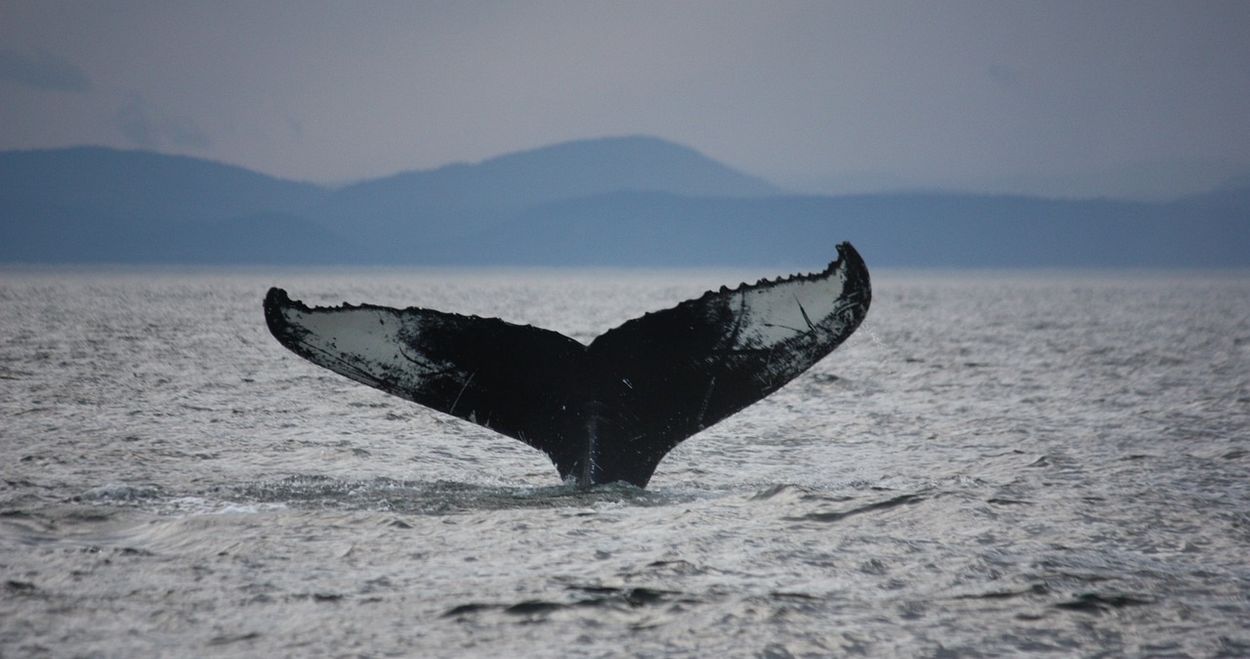
Tips for photographing whales in Tadoussac
I’m going to borrow Valérie’s keyboard for a moment to give a few photographic tips.
I’ve been on whale watching trips before, although not specifically in Canada but in the Pacific. The principles of photography remain the same. Whales may not be the fastest creatures, but they can move quickly enough to require attention to your camera settings. It’s possible that you may not always get very close to them, although whales often come quite near.
When it comes to equipment, I recommend using a versatile hybrid camera with a 70-200mm zoom lens. This combination allows you to adjust the focal length as the whales move closer or farther away. Personally, I use the Tamron 70-180mm FE, which is an excellent and reasonably priced option. If you want even more flexibility and the whales are quite far away, consider a more powerful zoom lens like the Tamron 150-500mm f/5-6.7 Di III VC VXD or the Sigma 150-600mm f/5-6.3 DG DN OS.
As for camera settings, I suggest using the ‘S’ or ‘Tv’ mode, which stands for shutter priority. Set the shutter speed to either 1/800 or 1/1,000s. Of course, adjust these settings based on the weather conditions during your whale watching excursion. If the weather is gloomy or unfavorable, you may need to increase your ISO to maintain a high shutter speed.
Whales in Tadoussac - Practical Information
How can I reach Tadoussac?
To reach Tadoussac from Montreal, you will need to drive approximately 480 km, which takes under 6 hours. Take Autoroute 40 and then Route 138. If you want to break up the journey, you can make a stop in Quebec City. Before reaching Tadoussac, there is a ferry service available to cross Sainte-Catherine Bay with your car. This service is completely free, and you can check the timetable here.
If you are traveling from Paris, we recommend comparing the best fares for a Paris-Montréal flight. You can do so by clicking on the following link.
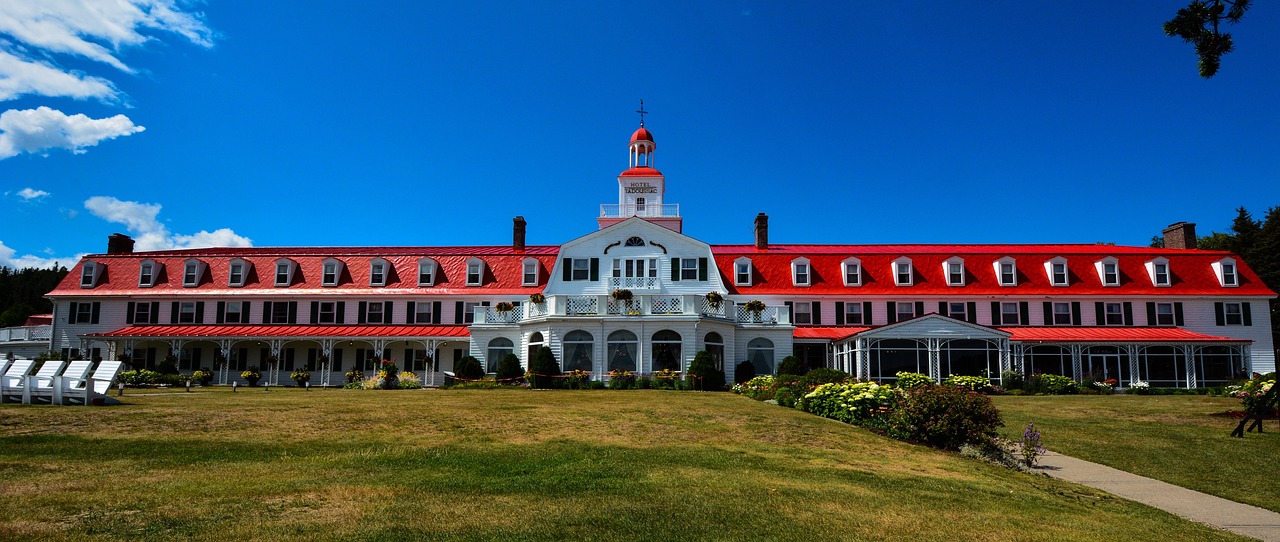
Where to stay in Tadoussac?
To simplify your search, here’s a small selection of accommodations in and around the village. It’s not a complete list, but I’ve picked a few worth visiting.
- Hôtel Tadoussac: A beautiful hotel with great facilities, including a swimming pool that’s perfect for children.
- Hôtel Motel Le Béluga: A charming little motel located in the center of Tadoussac, offering clean and quiet rooms.
- Au Cachalot Caché le gîte hôtel: A high-quality gîte situated in a peaceful area with an excellent breakfast.
- La Maison Harvey&Lessard: A magical place with stunning views of the fjord!
- La maison du capitaine: A vacation home that’s ideal for families looking to rent together.
- Le camping Tadoussac: A campsite set in a beautiful location in Tadoussac.
Here are some additional places to stay in Tadoussac.
If you’re just passing through, we’ve also put together a guide to the best places to stay in Montreal.
Apart from whale watching, what else is there to do in and around Tadoussac?
Although that wasn’t the main focus of this article, I believe it’s always interesting to provide you with more information.
What can you do in the village of Tadoussac?
Tadoussac is a stunning village that is definitely worth a visit. Here are some places you should explore in and around the village:
- Baie de Tadoussac: Experience the refreshing seaside atmosphere by taking a leisurely stroll along the beach in the heart of the village.
- The Marine Mammal Interpretation Centre: Located within the village, this scientific museum offers a fascinating exhibition about the whales of the St. Lawrence River.
- The Tadoussac Dunes: Surprisingly, you’ll find sand dunes in the area! Witness the impressive dunes and enjoy a magnificent view of the river.
- Petite Chapelle de Tadoussac: Situated in the village center, this charming chapel was built between 1747 and 1750, adding to the village’s allure.
- Chauvin Trading Post: Although it’s a replica, this site showcases the trading activities between Europeans and First Nations during that era.
- Black Bear Observation: If you’ve always dreamed of seeing black bears but don’t have the patience or courage for a hike, you can observe them in semi-liberty at the Ferme 5 Étoiles holiday center.
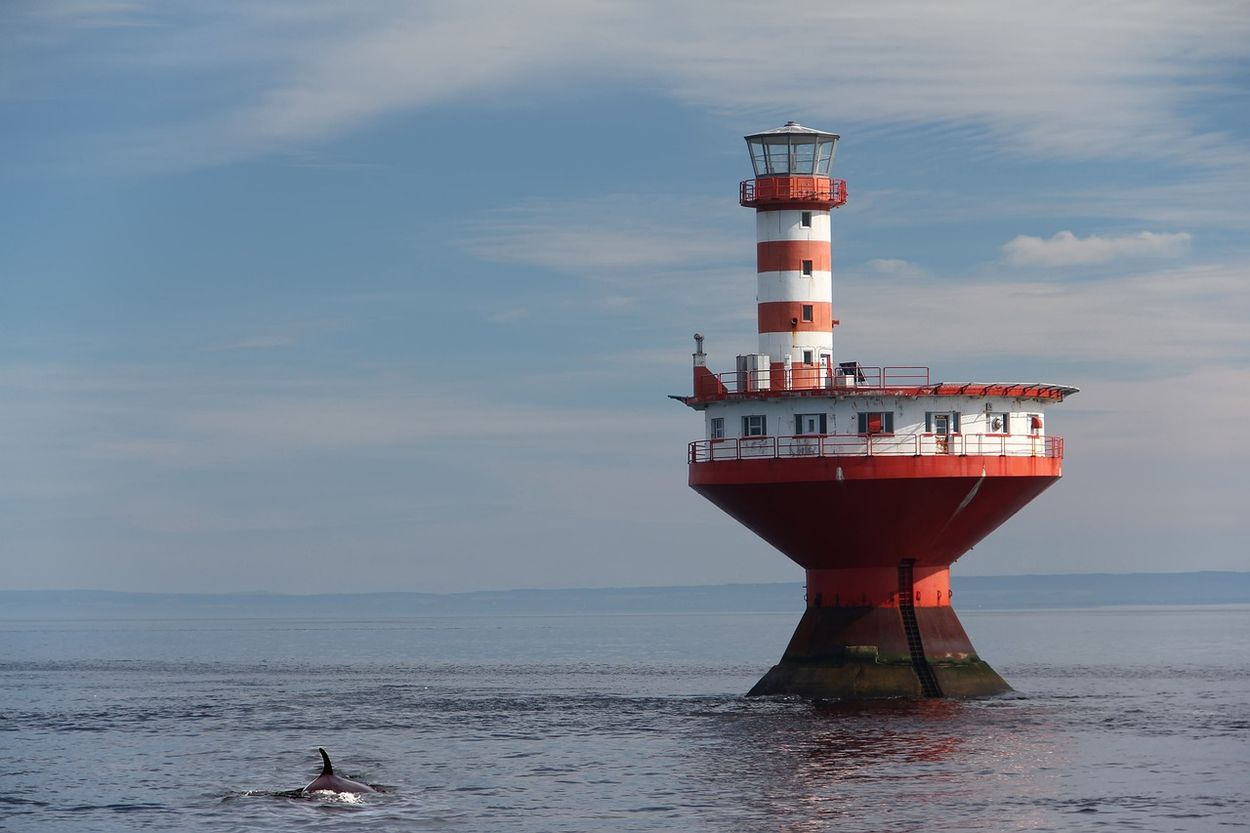
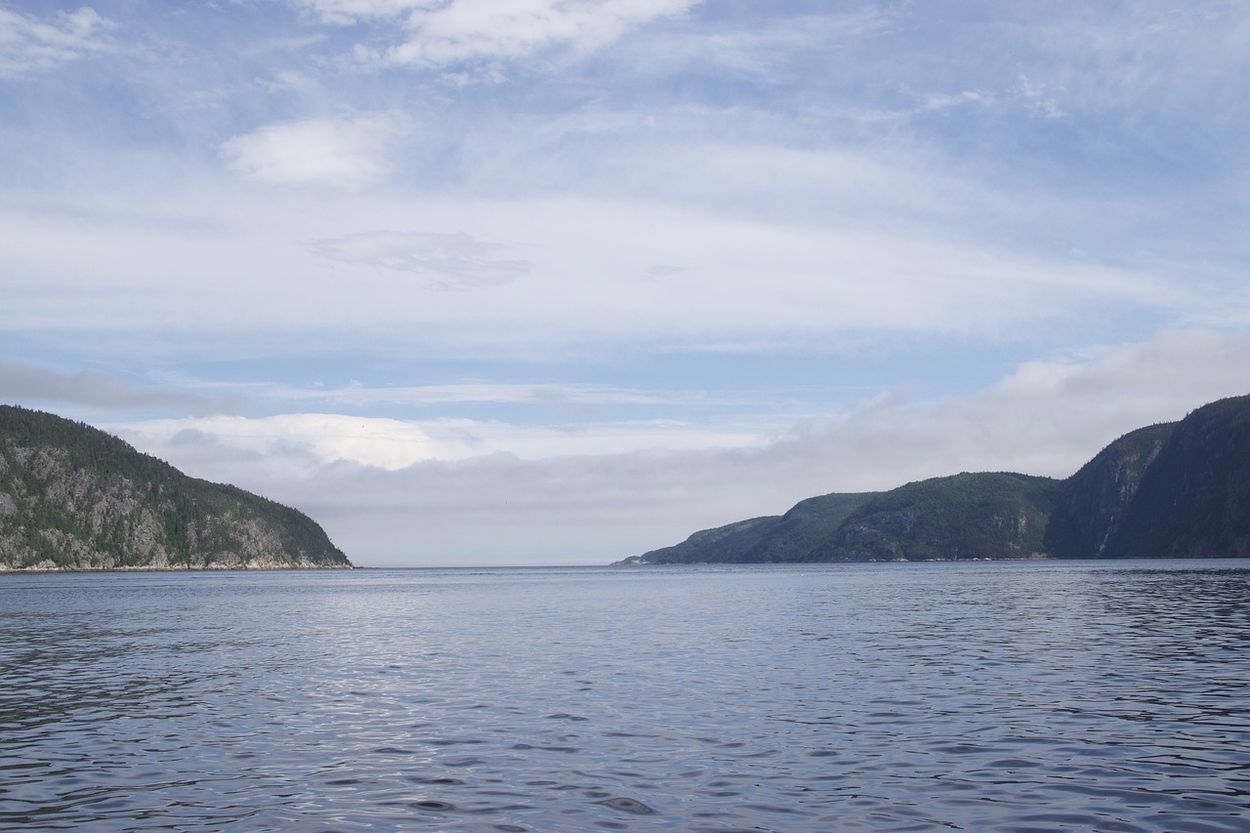
In the Tadoussac area, you have some exciting options:
During summer:
- Sea kayaking: It’s the perfect way to explore the area and maybe catch a glimpse of a whale!
- Quad biking: A fantastic way to venture off the usual paths!
In winter:
- Snowmobile trip: An amazing 1-2 hour excursion to discover the untouched beauty beneath the snow!
- Dog sledding: Experience a few hours or half a day of this thrilling activity!
By the way, check out our full guide to the best places to sled dog in Quebec if you’re interested in winter activities.
Hiking in and around Tadoussac:
For those who enjoy walking, here are the main trails in the area:
- Sentier de la Pointe de l’Islet (900m, 25 min, easy): Accessible from the village of Tadoussac, this walk offers a splendid view of the river and a chance to spot distant whales.
- Sentier de la Colline-de-l’Anse-à-l’eau (1.1km loop, 45 mins, easy): Along this trail, you’ll enjoy picturesque views of the river.
- Sentier de la plage de Tadoussac (2 km round trip to Pointe Rouge, 1 hour, easy): Take this route for a pleasant walk along the beach.
- Walking in the Saguenay Fjord National Park: The Sentier du Fjord is a longer walk (41 km in total) with cabin accommodations available for overnight stays. There are several access points to this trail, including one that leads to Mont Adéla-Lessard (a 7 km route starting in Tadoussac). From there, you can enjoy a breathtaking panorama of the mouth of the Saguenay Fjord.
By providing you with the essentials of whale watching in Tadoussac, I hope I’ve inspired you to come and experience it firsthand. I wish you a magnificent encounter with these beautiful creatures!
To continue your journey, I invite you to read another article about Canada. This time, you’ll embark on a western adventure and explore Banff National Park with Sylvain as your guide.
Stay tuned for more exciting adventures!






